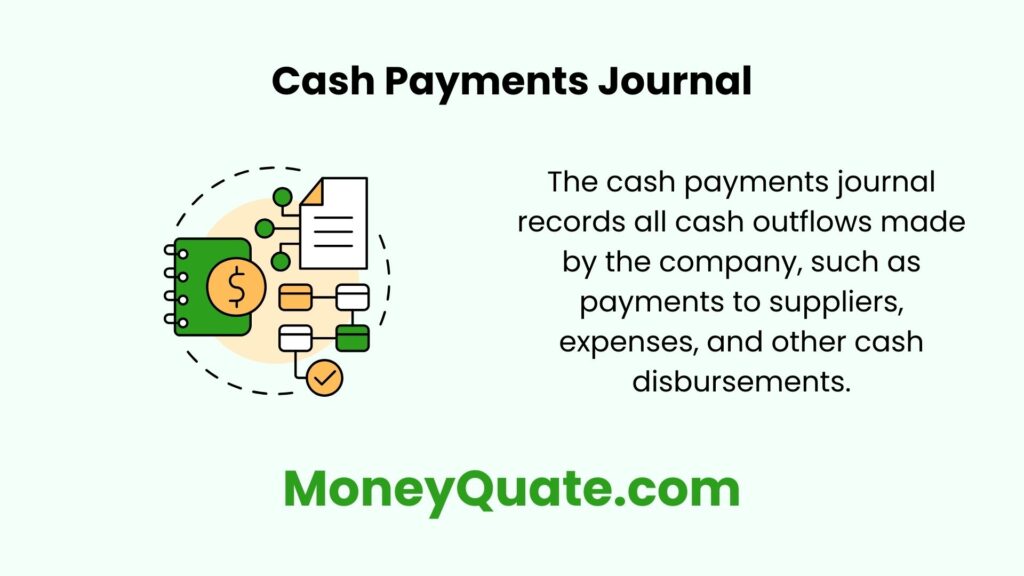Ever wonder how businesses keep track of all the money they spend? They use a handy tool called the cash payments journal.
Think of it as a checkbook for businesses, recording every cash payment they make for things they need to run smoothly.
As accountants, we use this journal to ensure clear and accurate tracking of a company’s cash flow going out.
Contents
What is a Cash Payments Journal?
Imagine a two-columned record-keeper specifically for cash flowing out of a business.
That’s the cash payments journal in a nutshell! Here’s a breakdown of what each column tracks:
- Debit Column: This side is left blank in a cash payments journal. Most journals have debits and credits, but this one focuses solely on cash outflows.
- Credit Column: This side records all the cash spent by the business. Think of it as money flowing out of your wallet. Examples include paying for supplies, rent, salaries to employees, or repaying a loan.

Keeping Things Balanced
A healthy cash payments journal is all about keeping track of what goes out.
The total amount of cash spent (credit column) should match any cash withdrawn from the bank or petty cash.
This ensures your records are accurate and reflect the company’s true cash on hand.
Benefits of Using a Cash Payments Journal
- Clear Cash Flow Picture: The cash payments journal provides a quick and easy way to see how much cash is flowing out, helping businesses manage their spending effectively.
- Budgeting and Control: By tracking cash expenses, businesses can stay within their budget and identify areas where they might be able to cut back.
- Accurate Recordkeeping: The journal ensures all cash outflows are documented properly, minimizing errors and making tax time a breeze.
Real-World Examples
- Example 1: A small clothing store uses the cash payments journal to record their daily cash expenses. Here’s a breakdown:
| Date | Description | Debit | Credit | Balance |
|---|---|---|---|---|
| Today | Rent Payment | – | $1,000 | $ (reduced by $1,000) |
| Today | Office Supplies | – | $200 | $ (reduced by $200) |
- Example 2: A freelancer pays a virtual assistant $300 cash for completed work. Here’s the breakdown:
| Date | Description | Debit | Credit | Balance |
|---|---|---|---|---|
| Today | Payment to Virtual Assistant | – | $300 | $ (reduced by $300) |
The Takeaway
The cash payments journal might seem simple, but it’s vital for any business.
By keeping track of cash outflows and ensuring everything balances, businesses can make informed spending decisions, stay on budget, and maintain accurate financial records.
So next time you hear about a cash payments journal, remember – it’s not just a record-keeper, it’s a cash flow guardian!